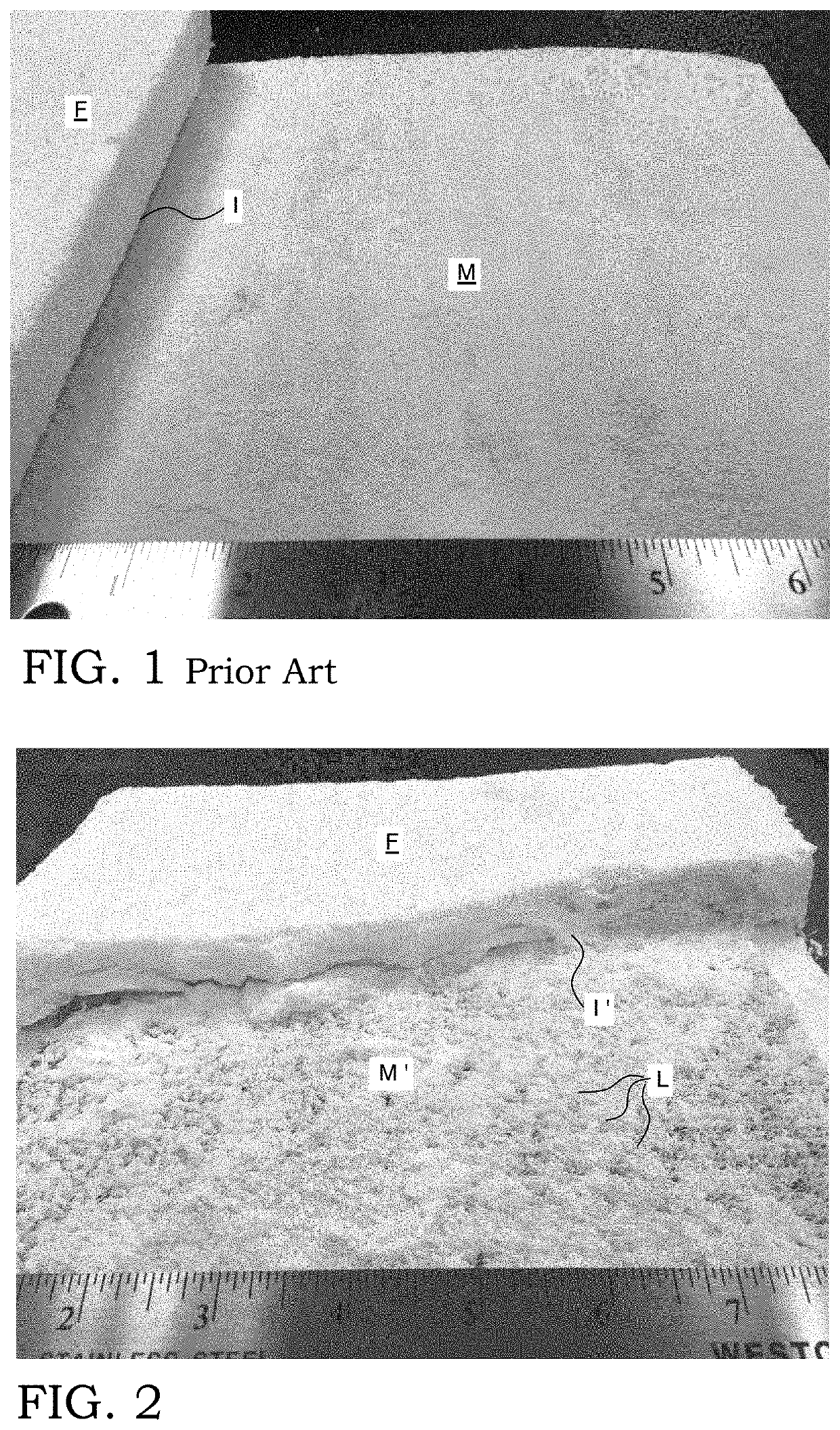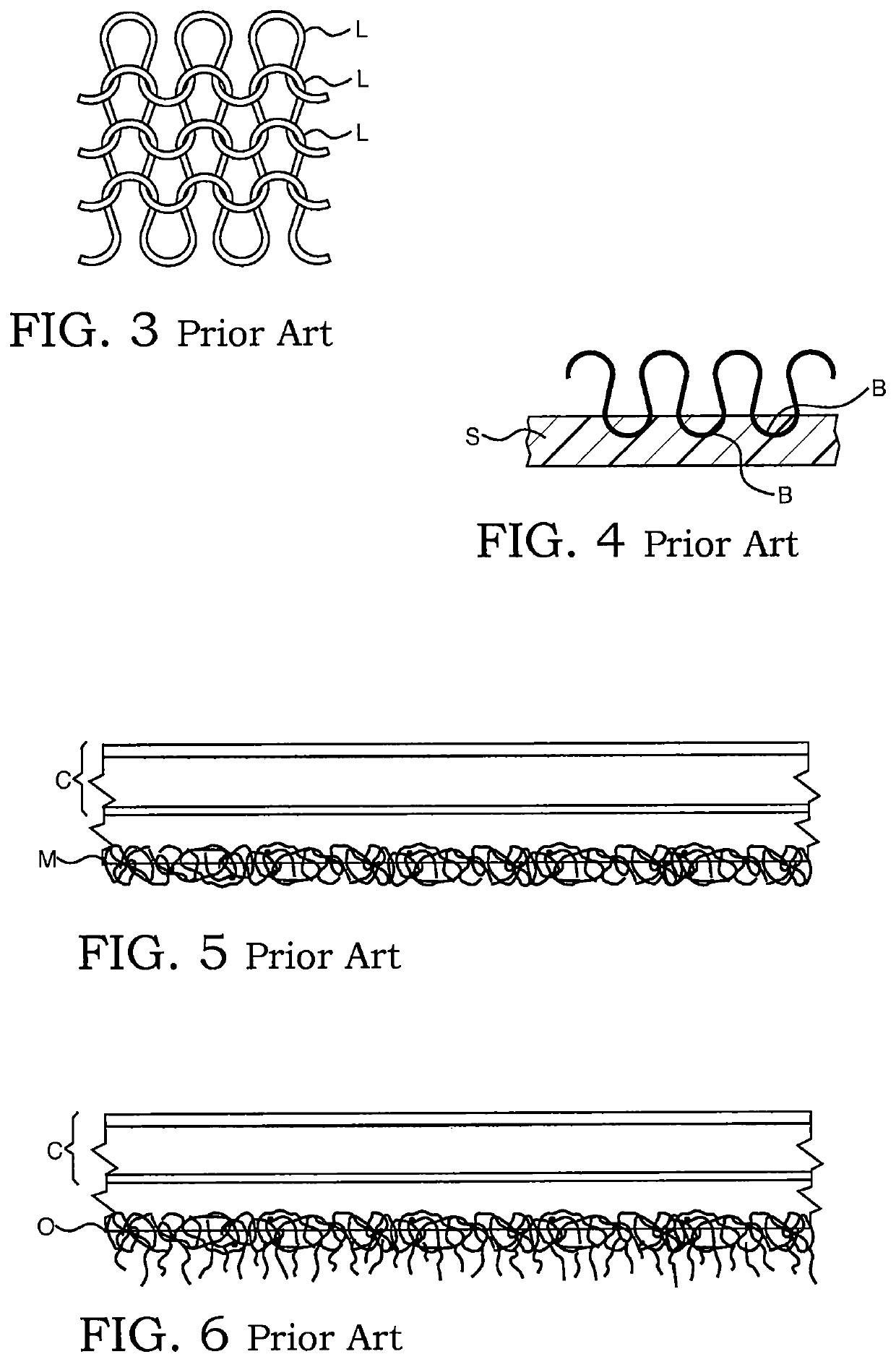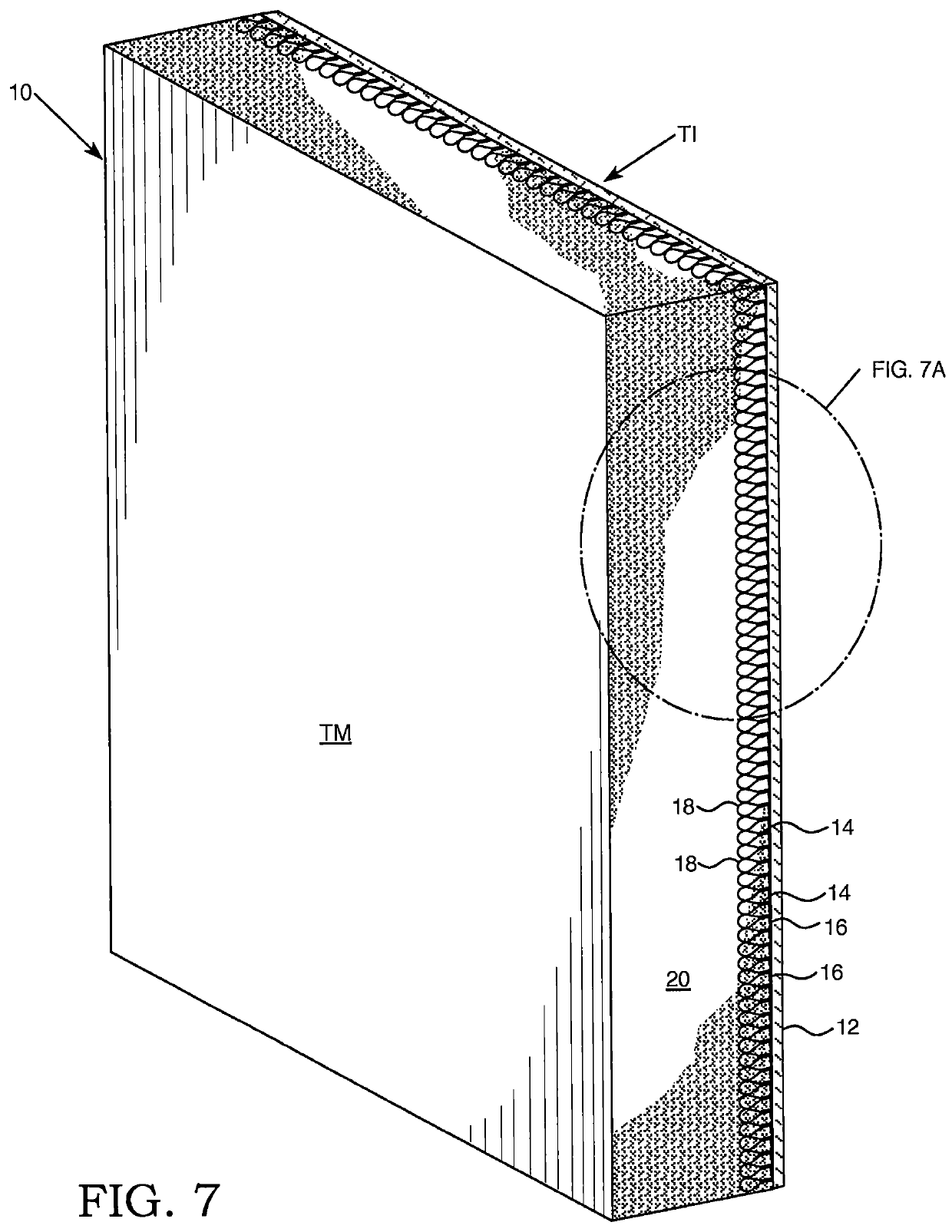Foam reefer wall using “loop” scrim fabric backing
a technology of scrim fabric and foam reefer, which is applied in the direction of transportation and packaging, rigid containers, other domestic articles, etc., can solve the problems of inherently increasing the bonding capability of the panel, reducing the adhesion, and reducing the bonding strength of the panel, so as to reduce the potential downtime, reduce the effect of thermal efficiency loss and greater adhesion
- Summary
- Abstract
- Description
- Claims
- Application Information
AI Technical Summary
Benefits of technology
Problems solved by technology
Method used
Image
Examples
Embodiment Construction
[0033]When referring to alternate embodiments, like that shown in FIG. 7B, common elements are commonly numbered though in the next hundred series.
[0034]When referring to any numerical length, width, percent improvement or other quantitative comparison number (or number range) herein, it should be noted that all such numbers are representative of embodiments of the invention as shown. Furthermore, any such range of numbers should expressly include each and every fraction or decimal between its stated minimum and maximum. For instance, any one component (of loop material) having from about 40 to 70 loops per square inch, should also specifically cover fabric backing substrates having about 41, 42 and 45 loops / in2 . . . and so on, up to about 65, 67 and 69.6 loops / in2. And for loop heights between abut 0.5 to 6 mm or more, preferably about 3 to 5 mm each, those loops would include all values between the aforementioned minimum and maximum loop heights. It is to be understood, however, ...
PUM
| Property | Measurement | Unit |
|---|---|---|
| heights | aaaaa | aaaaa |
| heights | aaaaa | aaaaa |
| height | aaaaa | aaaaa |
Abstract
Description
Claims
Application Information
 Login to View More
Login to View More - R&D
- Intellectual Property
- Life Sciences
- Materials
- Tech Scout
- Unparalleled Data Quality
- Higher Quality Content
- 60% Fewer Hallucinations
Browse by: Latest US Patents, China's latest patents, Technical Efficacy Thesaurus, Application Domain, Technology Topic, Popular Technical Reports.
© 2025 PatSnap. All rights reserved.Legal|Privacy policy|Modern Slavery Act Transparency Statement|Sitemap|About US| Contact US: help@patsnap.com



